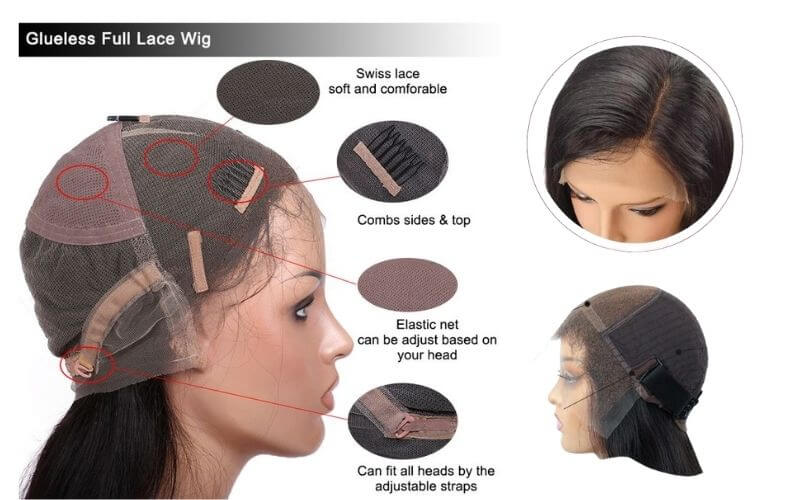Uncategorized
What Is A Glueless Wig? Easy Wear, No Glue, No Mess!
The term “glueless wig” has been gaining prominence, offering a convenient and user-friendly alternative to traditional wigs that require adhesives. In this article, we’ll delve deeper into What Is a Glueless Wig? How they work, their benefits, and why they have gained immense popularity in the world of hair fashion and styling.
1. What Does Glueless Wig Mean ?
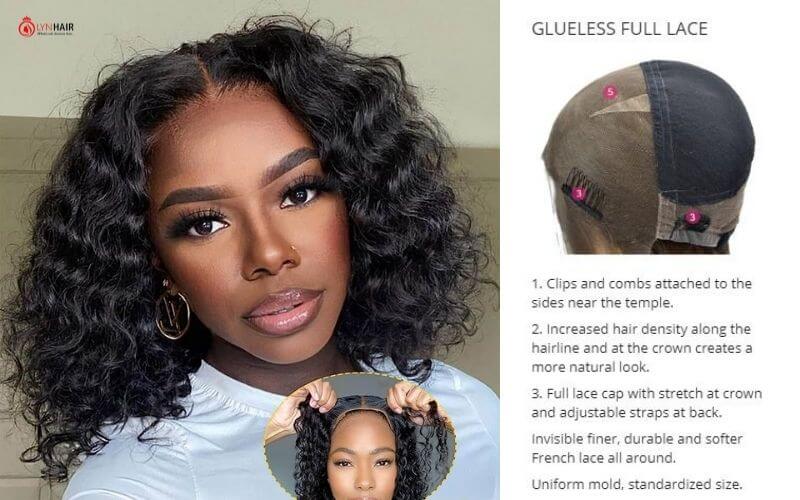
Glueless wigs are wigs that you can wear without using any glue or tape to attach them to your scalp. They have adjustable straps, combs, clips, or elastic bands to keep them securely in place without the need for adhesives. This makes them easy to put on and take off, and they are a good option for people who want a comfortable and convenient wig-wearing experience without using adhesive products.
1.1. Disadvantages of a glueless wig?
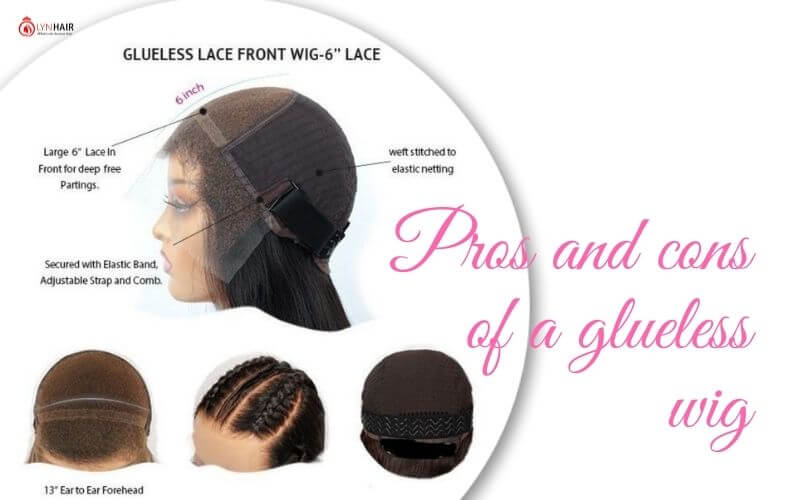
While glueless wigs offer convenience, they do come with a few downsides. They may not be as secure as adhesive-based wigs, especially in windy conditions, and may require extra care to stay in place. Additionally, glueless wigs may not fully cover your natural hairline, which could necessitate extra styling to achieve a seamless look. And, certain complex hairstyles may be more challenging to achieve with glueless wigs compared to adhesive wigs, limiting styling options.
1.2. What is the difference between a glueless wig and a regular wig?

A glueless wig differs from a regular wig mainly in how it is secured to the head. Glueless wigs stay in place without adhesive, using built-in combs, adjustable straps, or elastic bands for a quick and comfortable fit. They’re easy to apply and remove, making them ideal for daily wear, and are gentler on the scalp.
Regular wigs, however, require glue or tape to stay secure, offering a more secure hold and a natural look, but they take more time to apply and remove, making them better for longer wear or special occasions.ing finish, making them popular for longer wear or special occasions.
2. How does a glueless wig stay on without adhesive?
Glueless wigs are designed to stay in place without the need for glue or tape, offering a secure and comfortable fit using built-in support features. These tools provide the stability you need while protecting your natural hair and scalp. Here’s a closer look at how they work.
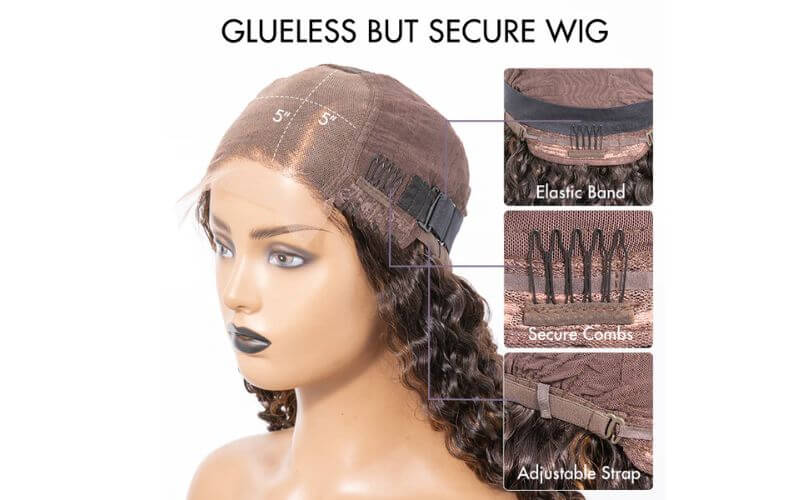
2.1. The Versatility of the GripLine
There are several types of grip solutions that help secure glueless wigs and toppers, each suited to different styles and personal preferences. These accessories ensure your wig stays put, even during active days.
2.1.2. Comfort Wig Grip Band
This soft, adjustable band sits around your head to create a stable base for your wig. It works well with silk top or non-transparent wigs and provides a secure fit without relying on glue, clips, or combs.
2.1. 3. Lace Wig Grip Band
Designed for lace front wigs, this grip band features a lace section that blends seamlessly with your wig’s lace material. It holds the wig in place while helping maintain a natural-looking hairline.
2.1. 4. Transparent Top Grip Band
Ideal for toppers or wiglets, this version features a translucent design that stays invisible under your hairpiece. It comes in different sizes for the perfect fit and can even be used with wigs for extra support.
2.1.5. Lace Top Grip Band
Made for lace top toppers, this grip band features a lace insert that blends naturally with your topper’s part. A clear back strap ensures the grip remains discreet while offering strong hold and comfort.
2.1. 6. Lace Grip Cap
This option combines a grip band and a cap in one, making it perfect for lace top wigs. It offers full coverage, added security, and a smooth base—great for those who want extra comfort and stability.
2.1.7. Grip Cap
For those who wear silk top (or skin top) wigs, the standard grip cap without lace offers the same level of hold and comfort. It creates a smooth, secure foundation for your wig without the need for adhesive.
2.2. More Ways to install Wigs Without Adhesive
Glueless wigs are designed with features that keep them secure without the need for glue or tape. Two of the most effective methods are adjustable straps and built-in combs or clips.
- Adjustable straps: Located at the back of the wig cap, these straps can be tightened or loosened to fit your head’s size. This ensures a snug, secure fit that keeps the wig in place throughout the day without the need for adhesive.
- Built-in combs or clips: Small combs or clips are sewn into the wig cap, usually around the temples, nape, and crown. They grip onto your natural hair, providing extra stability and preventing the wig from shifting or slipping.
3. How to install a glueless wig? – Step-by-Step
Installing a glueless wig is a relatively simple process that doesn’t require adhesive or glue. Here are step-by-step instructions on how to install a glueless wig:
What You’ll Need:
- A glueless wig
- A wig cap (optional)
- Bobby pins or clips (optional)
- A wig grip or adjustable straps (included with some wigs)
3.1: Preparing Your Natural Hair for a Glueless Wig
If you have long hair, it’s a good idea to braid or pin it close to your head to create a flat surface for the wig to sit on. This step is optional, but it can help ensure a more secure fit.
3.2: Securing Your Wig
Some people prefer to wear a wig cap to help secure their natural hair and create a smoother base. If you choose to use a wig cap, put it on before placing the wig. Hold the wig by its ear tabs and flip it inside out. Adjust the straps or wig grip to fit your head size. Most glueless wigs come with adjustable straps to achieve a secure fit.
Place the wig on your head, starting from the front and pulling it back over your natural hair. Ensure that the wig’s front hairline aligns with your own, creating a natural look.
Use the combs or clips attached to the wig to secure it in place. These are typically located at the front, sides, and back of the wig. Gently push the combs or clips into your natural hair to hold the wig firmly.
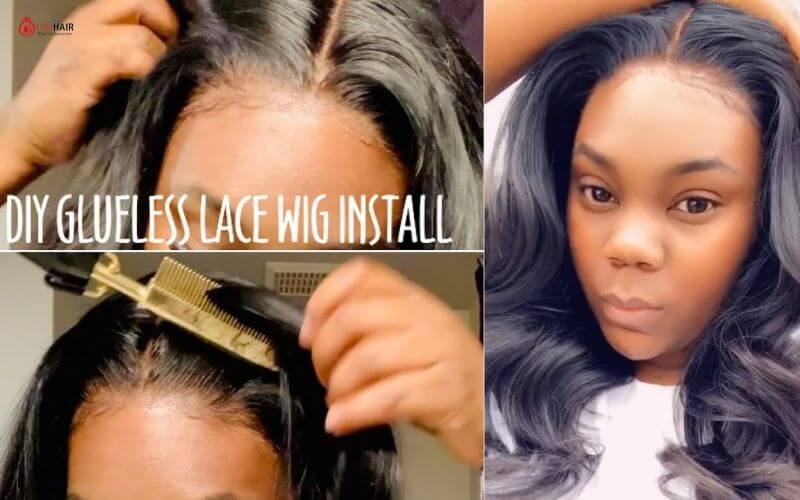
3.3: Tips for Blending Hairline and Edges for a Natural Look
Once the wig is securely in place, adjust it as needed to ensure a comfortable and natural fit. You can part the wig, style it, and make any necessary tweaks to achieve your desired look. Here are some tips for you to achieve natural look:
Customize the Hairline: If your glueless wig has a lace front, trim the lace carefully to follow the natural shape of your hairline. Use small scissors and take your time to avoid over-cutting.
Blend with Baby Hairs: Create and style baby hairs using a small edge brush and a light edge control gel. This helps disguise the wig’s edge and blends it better with your natural hair.
Tint the Lace: Use a lace tint spray or apply foundation or concealer that matches your skin tone on the underside of the lace. This helps the lace blend into your scalp for a more realistic look.
Melt the Lace (Optional, No Glue Needed): Use a hot comb or a blow dryer on low heat to gently press the lace down into your skin. This helps “melt” the lace for a smoother, more natural transition.
Pluck the Hairline (If Needed): If the hairline looks too dense or unnatural, carefully pluck a few hairs using tweezers to create a softer, more natural hairline.
4. Can you glue down a glueless wig?
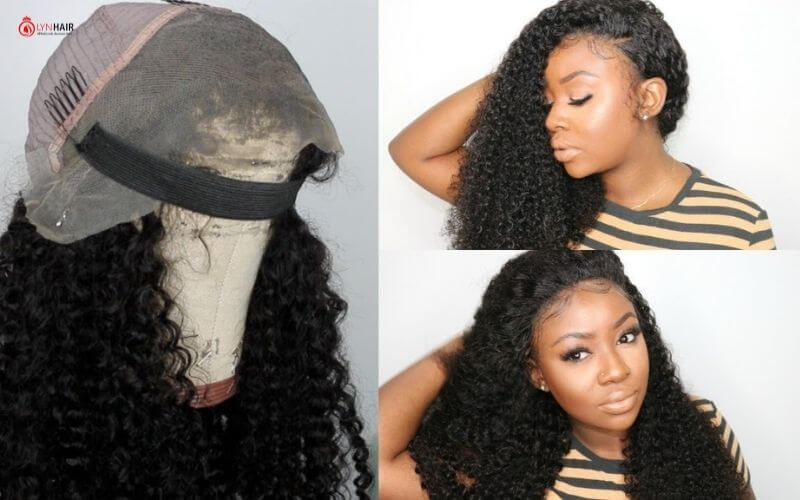
Glueless wigs are designed to stay secure without the need for adhesive. With features like adjustable straps and built-in combs or clips, your wig should stay in place even in windy conditions or during strenuous activities. While we don’t recommend using glue on your glueless wig, as it can cause wear and tear and put tension on the wig, it is possible to do so safely. Here’s how:
4.1. How to Safely Use Adhesive on a Glueless Wig
- Choose a gentle adhesive: Use wig-specific adhesives or gels that are safe for your skin and easy to remove.
- Protect your scalp: Before applying glue, use a protective barrier or scalp protector to shield your skin.
- Use sparingly: Apply a thin layer of adhesive along the perimeter of your hairline or where the lace meets your skin to avoid overuse.
- Remove carefully: When it’s time to take off your wig, use a wig adhesive remover to gently dissolve the glue, making sure not to tug or pull on the wig or your skin.
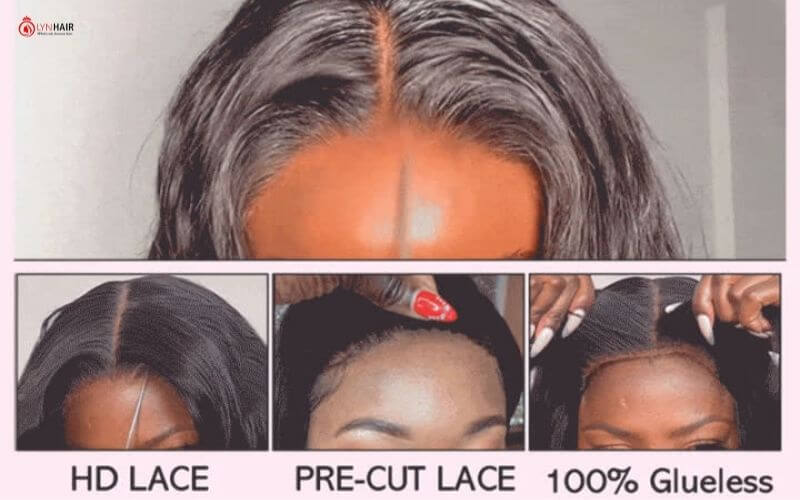
5. What Is a Glueless Lace Wig? Choosing the Best Wig for Style and Comfort
A glueless lace wig is a type of glueless wig that features a lace front or lace top, which gives the appearance of a natural hairline and scalp. It combines the realistic look of a lace wig with the convenience of glueless wear, using adjustable features to stay secure without adhesives. It’s perfect for those who want both style and ease of use, without damaging their edges or skin.. Choosing the perfect glueless lace wig involves finding a balance between style, fit, and practicality. Here’s what to consider to ensure you select the best wig for you:
- Length & Color: Choose a length you feel confident in—short, medium, or long—and a color that matches your skin tone and style, from blonde to black and everything in between.
- Density: Go for high density if you want fuller, more glamorous hair, or low density for a natural, lightweight look that’s easier to style.
- Cap Size & Fit: A snug, comfortable cap is essential. Use adjustable straps and pick a cap type—lace top, silk top, or mono top—based on your comfort and coverage needs.
- Budget: Quality glueless wigs come at different price points. Focus on durability and overall value to make the most of your investment.
6. Embrace Effortless Beauty with Glueless Wigs from Lyn Hair
When it comes to choosing a new hairpiece, glueless wigs from Lyn Hair offer the perfect balance of style, convenience, and comfort. Designed for both beginners and seasoned wig wearers, these wigs provide a secure fit without the hassle of adhesives. Whether you’re looking for a natural, everyday look or a bold new style, Lyn Hair’s glueless wigs offer versatility for any occasion.
Ready to transform your look? Experience the effortless beauty and quality of glueless wigs with Lyn Hair. Schedule your personalized consultation today and find the perfect wig to match your style and comfort.
𝑭𝒐𝒓 𝒎𝒐𝒓𝒆 𝒊𝒏𝒇𝒐𝒓𝒎𝒂𝒕𝒊𝒐𝒏 𝒄𝒐𝒏𝒕𝒂𝒄𝒕:
Whatsapp: +84.936.085.069
Follow us on Instagram: @lyn.hair_official and @lynhair.factory
Website: lynhair.com

